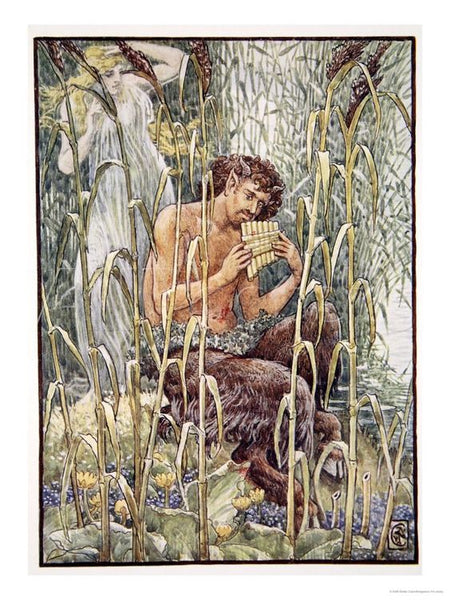Where man came of age

This classic illustration by Walter Crane, most famous for his work for children's books, perfectly captures the early spirit of man's relationship with woodland. It shows Pan, god of the wild, in harmony with his surroundings. Being nomadic hunter and gatherers, the lives of the early forest settlers were interwoven into the very fabric of the woodland landscape, and, like the animals, they became masters of a life under the canopy. The wood provided everything for them: shelter, medicine, tools, an abundance of food, and learning what you could eat - and what you certainly shouldn't - was essential for their health and survival. These herb masters were the first pioneering chemists, and many of these natural medicines, such as the willow deriving Aspirin, are still used to this very day.
Their knowledge of woodland life was equally matched with their respect for the environment, and this was projected towards the early deities of nature, such as Pan, the Greek god of the wild, and Cernunnus, the Celtic god of nature and fertility. The images of these horned gods were later damningly used by the Christians to represent Satan.
For the early Celts, the trees were seen as sacred homes for woodland spirits. They also believed that every person was represented by a specific sacred tree - depending on what time of the year they were born - and that the behavioural traits and character of a person would be attributed to their birth tree; click here to discover your very own sacred Celtic tree.
The ancient Greeks also believed that the woods were home to fantastical half man, half goat deities, known as Satyrs. These are the joyous pipe-playing fauns of the forest, who represent the charm and magic of woodland nature. Their fluted melodies sung the tune of a breeze in the branches, the delightful birdsong, and the trickle of a woodland stream.
And then we have the children's favourite, the Unicorn, the very wild and mystical white horse with its magical horn. In old English folklore the unicorn symbolises grace and purity; which is evident in the beasts ability to purify poisoned water with its horn, heal the sick, and the fact that only a virgin has the capacity to capture one.
But in our introduction to this blog series, Nature's City we saw how the Wild Wood can divide opinion. Its seemingly orderless and mercurial presence can stir the most placid of imaginations. It is a place of shadows, of hidden noises, of the unknown: where you can never be sure exactly who or what is hiding, (or maybe even lurking). In our next Wild Wood instalment we will look at how this mysterious wild environment has influenced some our timeless works of literature.
Explore the DM Woodland Collection with greeting cards, art prints, coasters and placemats.
